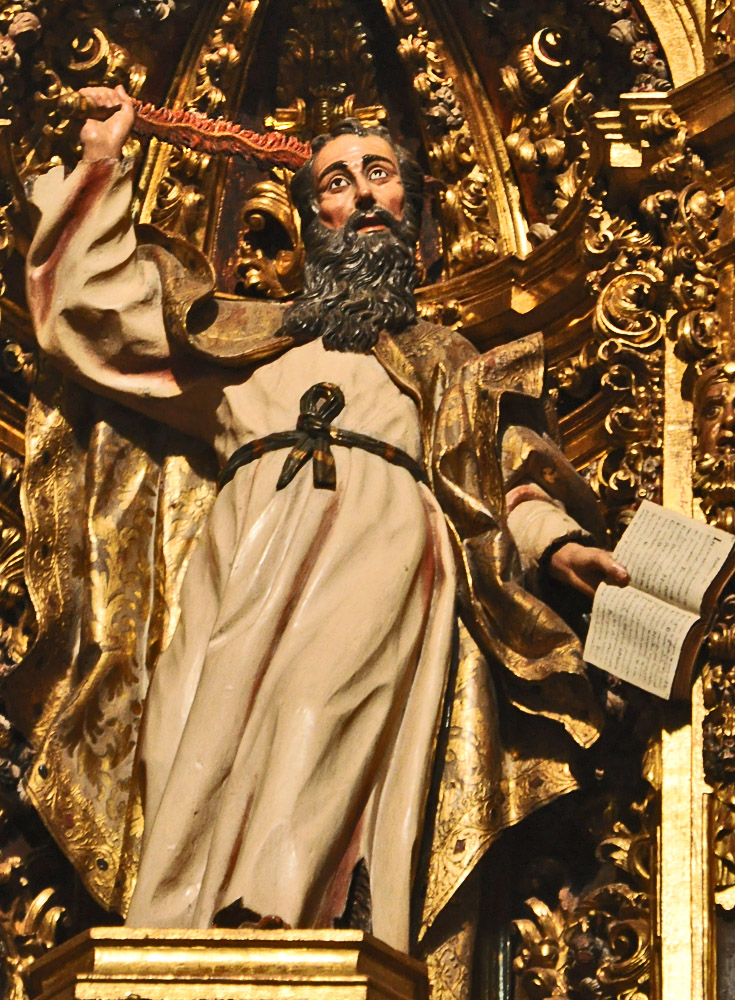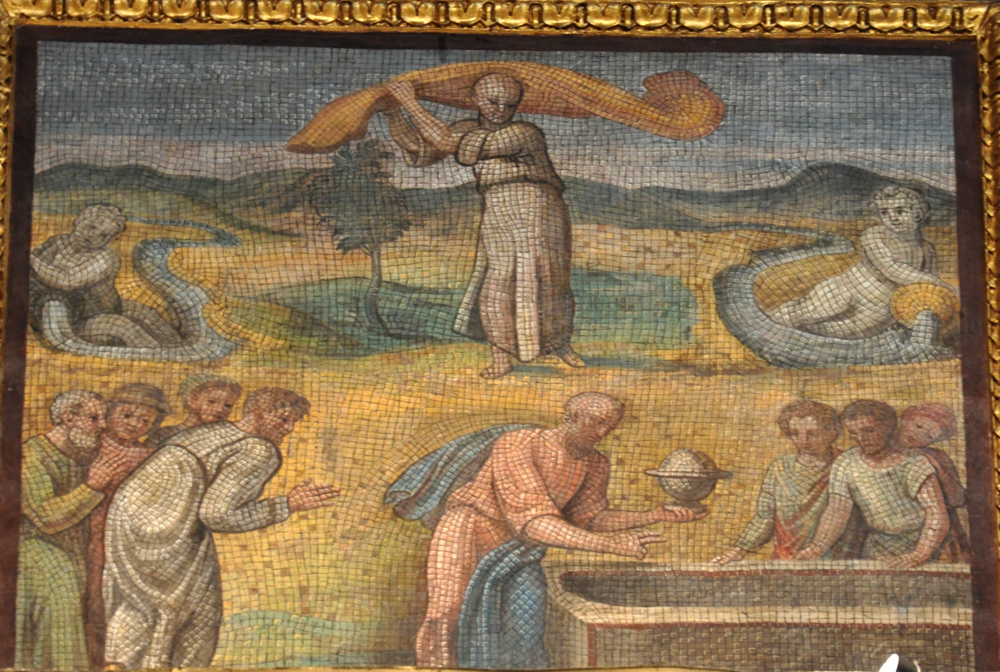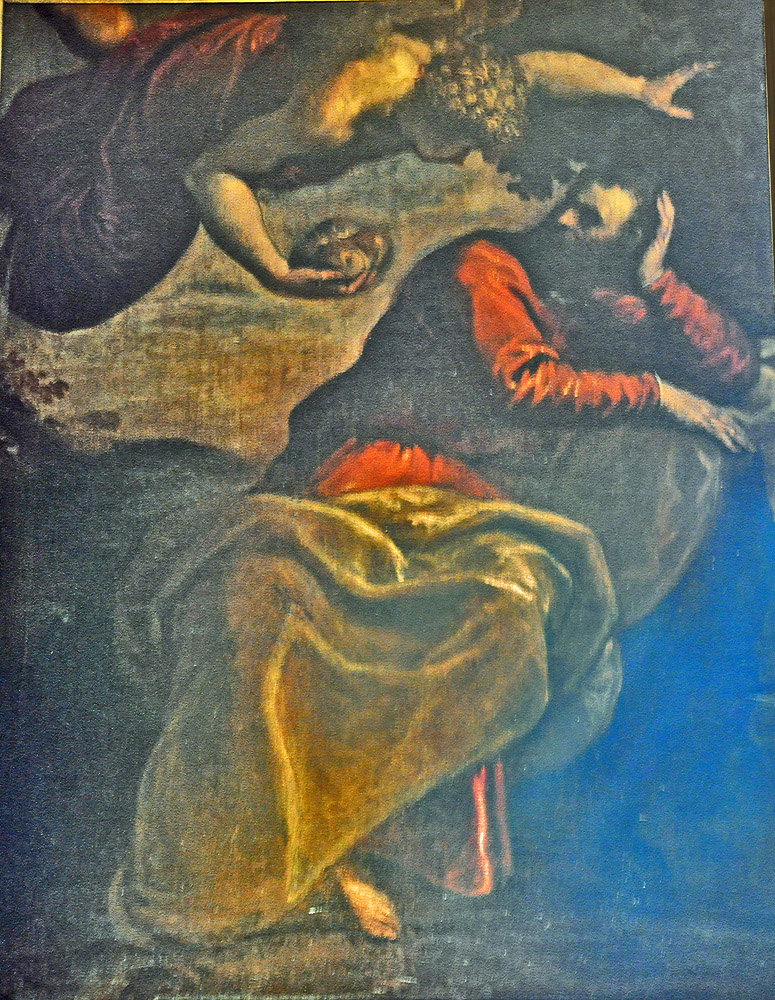In 1 Kings 18:20-401 Elijah demonstrates the power of God by pouring twelve jars of water over a pyre prepared with a sacrificial victim. He then called on God to set the sodden wood afire. When God did so, the people repented their worship of Baal. This is why in the first picture at right he holds a flaming sword in his right hand.
The miracle happened on Mount Carmel, and because of it a monastery was established there in the 12th century. The monastery eventually developed into the "Carmelite" order with daughter institutions throughout Europe.
The second picture at right represents Elijah's cleaving of the waters of the Jordan by casting his cloak upon it (2 Kings 2:8). In the third, an angel feeds him during his exile in the desert (1 Kings 19:5-7). Other works picture the ravens that brought him bread and meat during the great drought (1 Kings 17:1-6) or his ascension to Heaven (2 Kings 2:11-14).
In the ascension account a fiery chariot arrives and the prophet is carried to Heaven "in a whirlwind." Some images have Elijah in the chariot as it ascends (example), but in a mosaic at St. Mark's, Venice, he is carried up by angels. The mosaic is at the east end of the south aisle and faces another at the west end in which it is the body of Jesus that the angels carry aloft. The two ascensions are also juxtaposed in a stained-glass window in Canterbury. The pairing of the two events reflects the interpretation of the commentators that Elijah's ascent prefigured Christ's.2
Elijah's ascent is witnessed by his successor Elisha, who cries pater mi pater mi currus israel, et auriga eius, "My father, my father, Israel's chariot and charioteer." A portrait of Elisha now in the Norton Simon Museum has him holding a scroll with those words..
Prepared in 2018 by Richard Stracke, Emeritus Professor of English, Augusta University.
HOME PAGE

Villanueva, The Prophet Elijah, 1742. (See the description page.)

Fifth-century mosaic in Santa Maria Maggiore, Rome. (See the description page.)

Palma il Giovane, Elijah Fed by an Angel, 1580-81 (See the description page.)
ATTRIBUTES
- Flaming sword
- Waving cloak
MORE IMAGES
- 6th century: Elijah at the Transfiguration: Sant'Apollinare in Classe, Italy.
- 1475: The Elijah panel in the rood screen at Santa Maria Gloriosa dei Frari, Venice.
- Circa 1489-1515: A panel in a coffered ceiling picturing Elijah wearing his cloak.
- 1720: Juan Francisco de Águilera, a painting of the Virgin of Carmen with Elijah and St. Joseph.
- 1824: John Martin's etching resolves the ambiguity of chariot and whirlwind by having Elisha watch Elijah arise in a fiery chariot enveloped by a whirlwind.
DATES
- 9th century B.C.
NAMES
- In the Vulgate and the Douay-Rheims translation, he is named "Elias."
ALSO SEE
NOTES
1 The references to 1 and 2 Kings here correspond to Vulgate 3 and 4 Kings.
2 Isidore of Seville writes, "Elijah signifies Christ, because just as he was taken above in a fiery chariot, just so was Christ assumed into Heaven by ministering angels" (Allegoriae, §95, my translation). Also see the Glossa Ordinaria, II, 868.